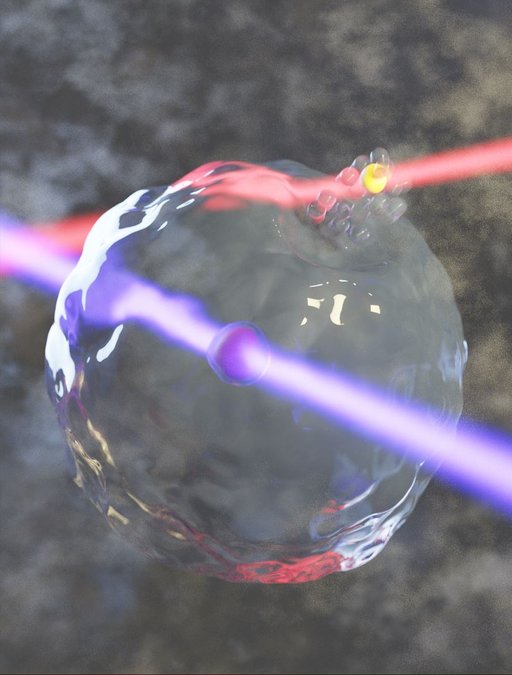Article from Femtolab in Nature
Measured how and how quickly a single sodium ion is gradually solvated by individual atoms in liquid helium.

All of us have experience with solvation in our everyday life – for instance, when we pour salt in water to boil potatoes. Solvation is also an omnipresent phenomenon in the natural sciences where it has been studied and used for hundreds of years. The macroscopic properties of solvation are well understood, for example how many grams of salt can be dissolved in one liter of water, but what does solvation mean at the atomic level? Here solvation is the process of attraction and binding of solvent particles to molecules or ions of a solute. An iconic example pertaining to solvation of salt in water, is water molecules, the solvent, binding to a sodium ion, the solute. This is portrayed in most textbooks on general chemistry and on Wikipedia. However, up to now, no experiment has captured the solvation process on the natural time scale, which is picoseconds, and with atomic resolution. Key challenges include how to define the time when the solvation starts and how to measure the number of solvent particles that are bound to the solute ion at a certain time.
Now, Femtolab, with students from Department of Chemistry and Department of Physics and Astronomy, has invented a method that makes it possible to follow how a single sodium ion is gradually solvated by individual atoms in liquid helium.
The starting point for the experiments was small nanometer-sized liquid helium droplets, each consisting of about 5000 He atoms and with a single sodium atom weakly bound at the surface. In the measurements, a femtosecond laser pulse ionized the sodium atom to create a sodium ion. This kicked off the solvation of the sodium ion at a well-defined time. Hereafter, another, delayed femtosecond laser pulse was used to push the sodium ion with the number of He atoms that had bound to the ion at that time to a detector. By varying the delay between the two laser pulses, the researchers measured how many helium atoms were bound to the sodium ion at different times. In this manner, the solvation process of the sodium could be followed atom-by-atom. It was found that the first six He atoms bind to the sodium ion with a rate of two atoms every picosecond and in a manner where the individual binding events are independent of each other.
When the sodium ion dissolves in the helium droplet, the bonding energy of the He atoms to ion must be removed. As an added bonus, the researchers were also able to measure how quickly this happens. It was found that a little more than half of the total solvation energy is dissipated already after 4 ps and that the energy dissipation is largest just when the ion is formed and then gradually decreases – similar to the cooling of a hot piece of metal that is thrown into a swimming pool.
The article:
Observing the primary steps of ion solvation in helium droplets
by Simon H. Albrechtsen, Constant A. Schouder, Alberto Viñas Muñoz, Jeppe K. Christensen, Christian Engelbrecht Petersen, Martí Pi, Manuel Barranco and Henrik Stapelfeldt
The article can be read via this link:
https://rdcu.be/dqBBB
There is also a Research Briefing at:
https://www.nature.com/articles/d41586-023-02950-6
New Scientist has a News story in their Chemistry issue at 11 November 2023:
https://www.newscientist.com/subject/chemistry/
Additional information | |
We strive to ensure that all our articles live up to the Danish universities' principles for good research communication (scroll down to find the English version on the web-site). Because of this the article will be supplemented with the following information: | |
External collaborators | Universitat de Barcelona, Spain |
External funding | Villum Foundation |
| Conflict(s) of interest | None |
Link to scientific article | Observing the primary steps of ion solvation in helium droplets: |
Contact | Henrik Stapelfeldt |
